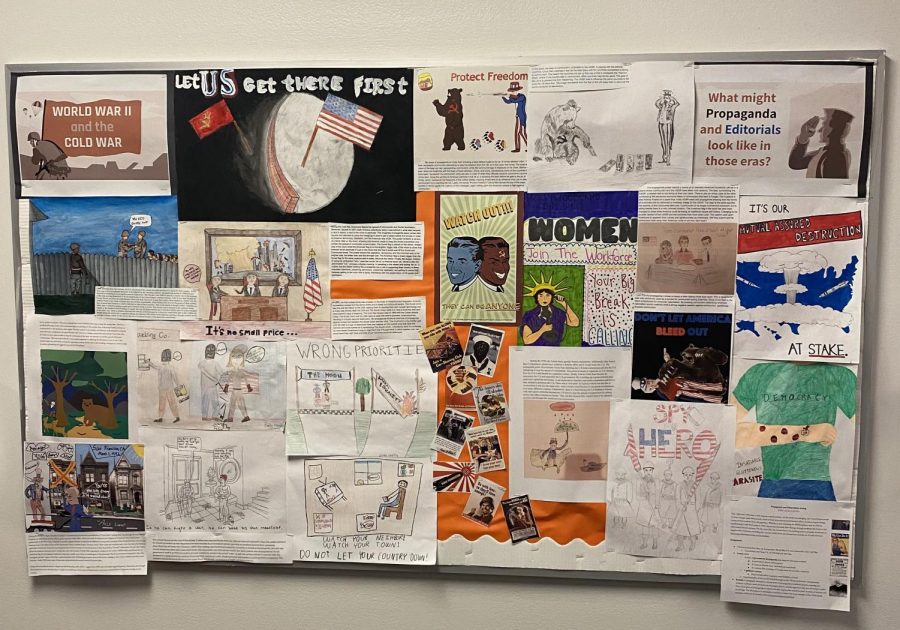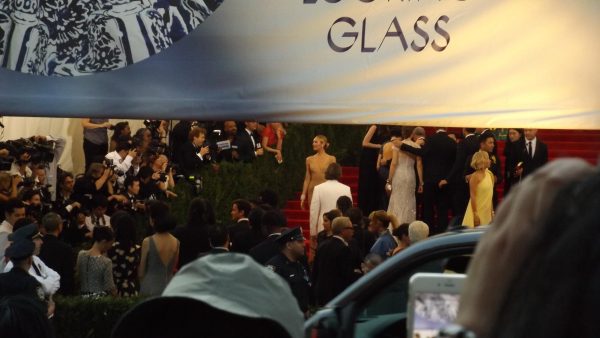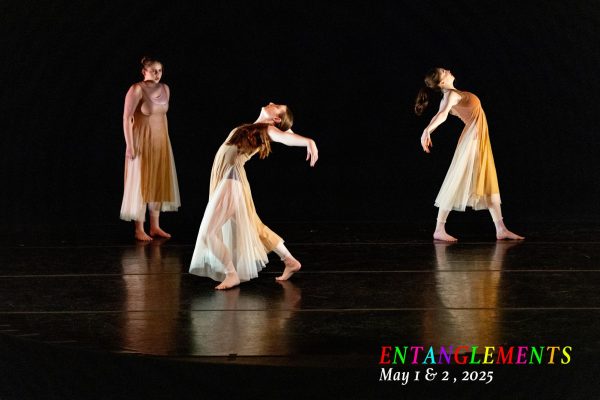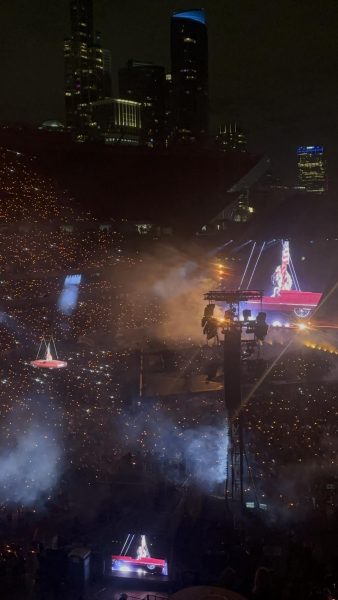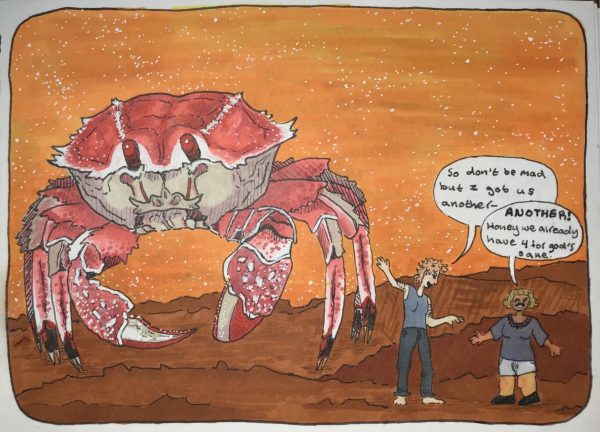History’s Pop-Up Art Show
There is a common trick that parents of little kids use to get children to eat vegetables; they sneak them in with noodles so kids don’t know they are eating broccoli. It’s that time of year when most of us can’t bear the thought of one more paper or one more test, which is why it was so well-received in my 11th grade history class when our teacher, Debbie Linder, nestled a recent assessment about World War II and Cold War propaganda into an art project.
The projects gave students a needed break. It had been a uniquely stressful and hard week at Latin. AP exams were looming. The weather was getting nice outside, and nobody wanted to be inside studying for another test, so it was a good time to try something out of the ordinary.
“I created this project because, after a year of watching my students express themselves creatively, whether it was doodling on the board, creating clever memes, or illustrating a children’s book, I could see that there were a lot of students who enjoyed expressing themselves artistically,” Ms. Linder said.
Students had fun and ended up with a pop-up art show on the east wall bulletin board on the fifth floor.
“Putting student work on the wall is something that I would normally do in my classroom,” Ms. Linder said. “I think that students like to see their work displayed in their classroom space. It gives them some ownership of and connection to that space. Unfortunately, I teach in five different rooms this year, so it is more challenging to do this. Fortunately, my department chairs said that I could use the bulletin board in the hallway on the fifth floor, so that is where it is now!”
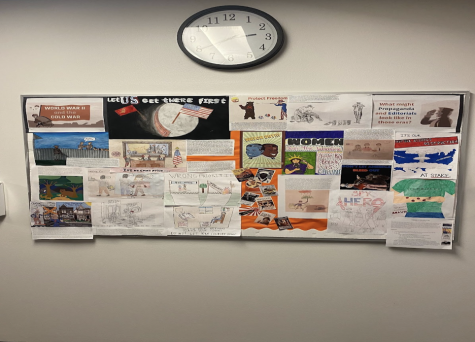
The art project had an extra benefit: Doing the project was relaxing and fun. There were not the usual stressors of making sure to cram information into students’ heads or drafting a well structured sentence. It was about not smudging or getting perspective and sizing right in order to convey a message. It was about choosing the right colors. Plus the messaging was fun because students got to role play propagandist a bit.
“While there is a great deal of persuasive power in propaganda during the [Cold War and World War II], it is equally important to consider the voices that were not being heard and the stories that were not being learned at that time in history,” Ms. Linder said. “That is why I suggested that students consider expressing their understanding of the era through political cartoons. This gave them a chance to criticize the internment of Japanese-Americans and to show the hypocrisy in the Red Scare. Take a look at [junior] Isabella Mizerk-Thorrens’ illustration as a fantastic example.”
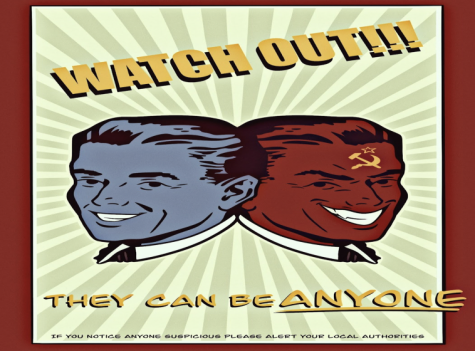
“I found this project to be very engaging in the sense that our medium of choice allowed me the freedom to execute the project using my digital art skills, which is not a regular occurrence in the academic classroom,” Isabella said. “Specifically, I found it captivating to slip into the role of a government official in the 1950s and create a piece of propaganda in the style of a poster from the era.”
Not all students chose the same medium. Like Isabella, some chose digital art. Others produced videos. Many drew posters. Some made radio recordings. Everybody went outside the box to bring creativity to historical analysis.
“This project really opened me to thinking in a new way about how the United States views itself,” said junior Trent Glimp. “I chose to depict a bear (a common Communist symbol in the United States) ripping apart Uncle Sam (a symbol of American nationalism). As an American, it is meant to elicit rage in the viewer and create the feeling that we, as an American people, can’t let America get ‘ripped apart’ by Communism.”

Instead of the grumblings and sighing about workload and school fatigue, this project provoked a positive student buzz. “I loved this project because it allowed me to use my creativity to express my knowledge,” junior Quinn Lovette said. “It is also enjoyable to work with symbolism.”
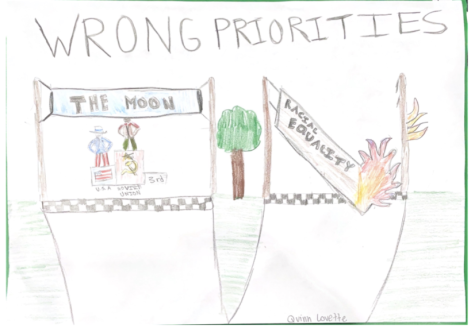
Junior Avery Rosenberg went the video route. While his project is not displayed on the bulletin board, he enjoyed it as well. “The propaganda project was a great way to demonstrate our understanding as an alternative way of assessment other than traditional tests or essays,” Avery said.
Students are so ready for it to be summer. They are stressed and just feeling done. Trading in grinding it out for a discarded box of crayons proved a welcome alternative, at least for my 11th grade section.
“It was a lot of fun and I will definitely do it again next year,” Ms. Linder said. “So expect that bulletin board to change throughout next year.”
Who says school can’t be fun?
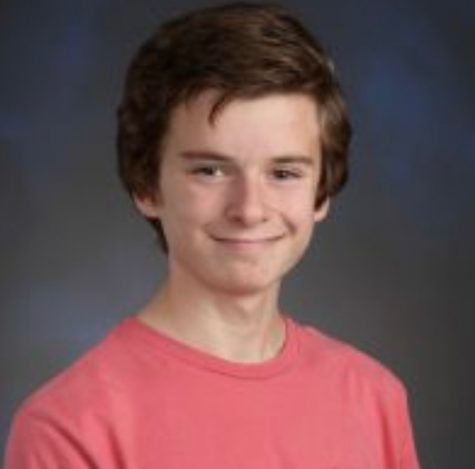
Matthew Kotcher ('23) is thrilled to continue to serve on The Forum as the Arts Editor and now as Director of Staff Recruitment and Development. Matthew,...


















































